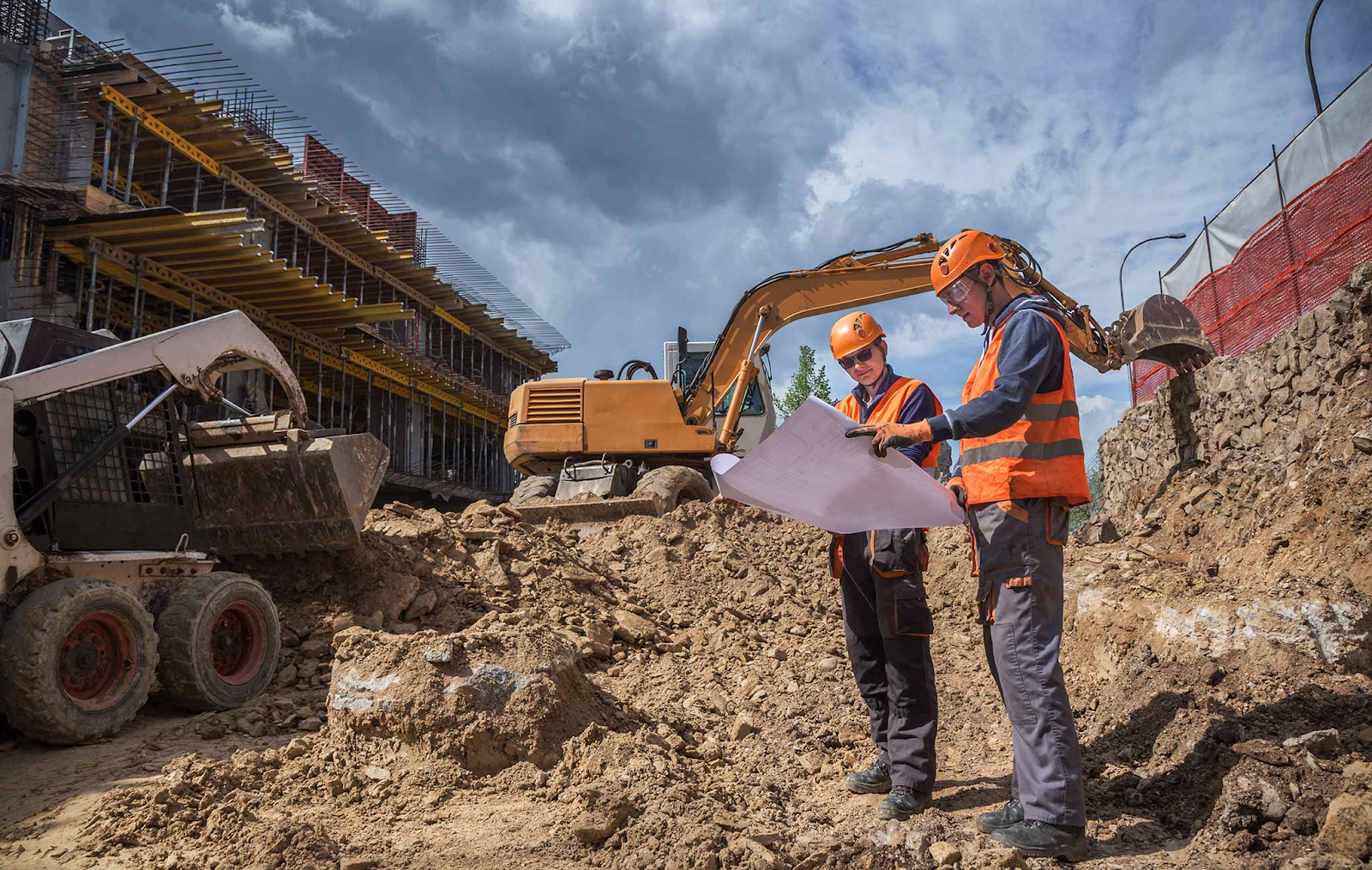The Greatest Guide To Geotechnical Engineering For Construction Projects
The Greatest Guide To Geotechnical Engineering For Construction Projects
Blog Article
The Definitive Guide to Geotechnical Engineering For Construction Projects
Table of ContentsGeotechnical Engineering For Construction Projects - The FactsThe Buzz on Geotechnical Engineering For Construction Projects7 Simple Techniques For Geotechnical Engineering For Construction ProjectsThe Ultimate Guide To Geotechnical Engineering For Construction ProjectsWhat Does Geotechnical Engineering For Construction Projects Do?Geotechnical Engineering For Construction Projects Things To Know Before You BuyNot known Facts About Geotechnical Engineering For Construction ProjectsNot known Details About Geotechnical Engineering For Construction Projects
Accompanying this boosted complexity comes geological and ecological factors that impact the layout of the foundation, which is perhaps one of the most essential component of any type of advancement. Individuals need to trust that structures, bridges, and roadways will certainly stand the test of time. A Geotechnical engineer recommends on exactly how a structure can best be sustained offering its special circumstances What's hidden listed below the surface area of the ground is most likely one of the most important item of details that a Geotechnical Designer seeks.These samples are then analyzed by the laboratory to determine soil make-up (Geotechnical Engineering for Construction Projects). The breakdown of sand, silt, clay, and various other products present in the dirt, assists the engineer determine what one-of-a-kind qualities the website has and what the ramifications of those might be. Naturally soil composition is only one test that can be carried out on examples
Getting My Geotechnical Engineering For Construction Projects To Work
Based upon these tests, there may be a lot more soil borings that are pierced, or the engineer may have adequate information from the first tests to make a suggestion to the customer on how finest to continue with their job. Results are usually reported with borings logs which show the dirt make-up and qualities at a range of midsts.
Geotechnical engineers are in charge of recognizing the homes of all-natural resources and utilizing this understanding to create secure, affordable designs for building projects. It is a vital part of any type of civil design project, as it is made use of to determine the suitability of a website for building and to guarantee the structure's safety and security.
This consists of executing lab examinations on the examples and utilizing geophysical methods such as seismic refraction and electric resistivity studies. This data is used to assess the website's suitability for building and construction and to establish the sort of structure that must be made use of. Geotechnical design evaluates dirt conditions, identifies potential hazards, selects a suitable structure system for the recommended framework, and figures out the most effective foundation design for a given project.
Facts About Geotechnical Engineering For Construction Projects Revealed
The structure might end up being unsteady or collapse without correct dirt stabilisation, bring about costly repairs and prospective injury. The stabilization process includes using different techniques to improve the security of the dirt, such as compaction, grouting, and the enhancement of strengthening products. Without dirt stabilization, the risks connected with building projects would be a lot higher, and the results much less trustworthy.
Geotechnical engineers conduct site investigations to assess the dirt's properties and recognize possible risks. They develop and execute dirt stablizing approaches, such as adding concrete, lime, or other maintaining agents, to improve the dirt's stamina and security.
The Basic Principles Of Geotechnical Engineering For Construction Projects
Geotechnical designers are crucial in helping to ensure that soil stablizing is done appropriately so that the framework is secure and safe. Geotechnical engineering is additionally utilized to examine dirt conditions and determine possible dangers. This includes evaluating potential flooding, landslides, and various other natural disasters that might influence the foundation.
Geotechnical designers use this knowledge to perform site investigations, soil, and rock testing, and to interpret the results to identify the appropriate design criteria for a project. This details is utilized to ensure that the foundation, retaining original site wall surfaces, inclines, and other frameworks improved or within the subsurface products have enough stability and resistance to outside loads, such as quakes, wind, and water.
These structures need a deep understanding of the habits of the subsurface products, along with the capability to handle the influence of excavation and building and construction on the surrounding atmosphere. Geotechnical designers utilize their know-how to establish the proper layout criteria for these structures, such as the shapes and size of the passage, the stamina of the sustaining rock, and the kind and amount of assistance required.
In addition to the design and building of structures, geotechnical engineering additionally plays a vital role in the recovery and maintenance of existing structures. As frameworks age, they may experience destruction or various other issues that impact their security and performance. Geotechnical designers use their expertise to evaluate the condition of these frameworks, identify the root causes of the issues, and develop strategies to address them.
Getting My Geotechnical Engineering For Construction Projects To Work
In this write-up, I will talk about the function of geotechnical design and the types of problems geotechnical designers address. Geotechnical designers (geotechs) are included in almost every sort of civil design project. Every structure is sustained by soil or rock unless it is floating, flying, or dropping down.
Geotechs are generally most included at the beginning of a job. Geotechnical Engineering for Construction Projects. Several of the jobs that a geotech might be responsible for are investigating subsurface problems, establishing needed lab screening of dirt and rock, interpreting the subsurface expedition results, and composing records that record the site conditions and give referrals for foundations, fill specs, slope security, etc
It is not unusual for geotechnical designers to Homepage specialize in just one of the areas provided above and research that subject their entire career. Geotechnical design is a crucial facet of any kind of civil design job. No matter exactly how excellent a framework is built, it will certainly not be fantastic for long if the foundation is inadequate.
Some Ideas on Geotechnical Engineering For Construction Projects You Need To Know

Oftentimes, points that may not appear crucial end up being essential years later on when problems arise. One last point to bear in mind: geotechnical design is wed to geology. Regardless of exactly how fantastic your engineering expertise is, if something vital is missed in the geologic characterization at a site, your proficiency may not save you.
Jese lives in West Virginia with his partner and boy. He enjoys crawling about on any kind of landslide he can find and spending time fly fishing on the water. He can be discovered on LinkedIn. I hope you enjoyed this week's message by visitor writer Jese Vance. If you want your firm potentially signing up with the Civil Engineering Collective, please contact us below or call us at 800-920-4007. I wish you'll join us.
The Greatest Guide To Geotechnical Engineering For Construction Projects

It is very important to make the structure to endure all-natural and man-made loads. Loads can be upright or lateral. It is very important to know the soil condition prior to creating the kind and deepness of foundation needed for the structure. In order to recognize the subsurface soil problem, a geotechnical investigation is needed.
The Ultimate Guide To Geotechnical Engineering For Construction Projects
Once the test results come, the Geotechnical Engineer evaluations the record, which outlines the dirt and rock residential properties groundwater problem and the associated threats. The type of structure called for to construct the structure is after that established. my explanation Based upon the recommendation of the Geotechnical Designer, the structural designer then develops the structure.
Report this page